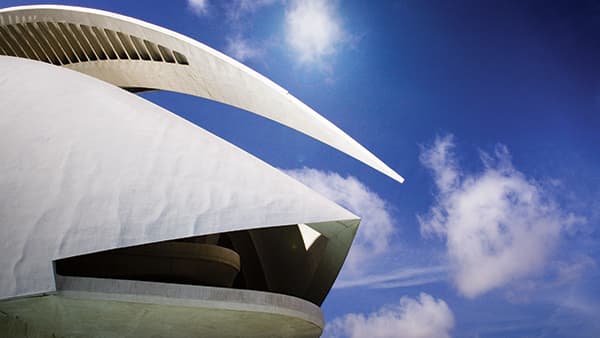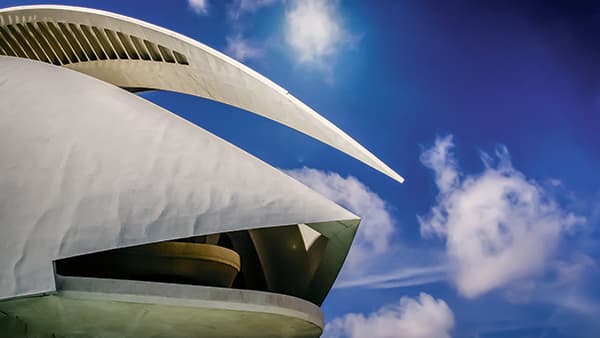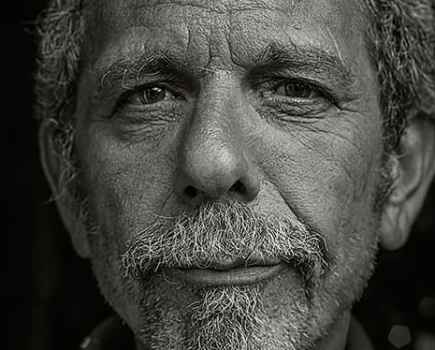Photo: The Spaceship Sneezes
Taken by: Phil Yorks
Canon EOS 450D, 18-135mm, 1/250sec at f/11, ISO 200
When Phil shot this picture of the opera house in Valencia, Spain, he was blessed with a perfect sky. The building is very impressive and Phil has shot it from a great angle. We don’t see much humour in architectural photography, so it’s nice that he has included this little joke in the image title. It does look like a spaceship, and the open mouth does look as if it is sneezing out that cloud.
White buildings can be a bit of a metering hazard. The camera sees something extremely bright and recommends you close your eyes for a long time, but that only turns the whiteness to grey. We want the building to appear white, so we should open up the exposure, disregard the camera’s suggestion by about 11⁄2 stops – if not by 2 stops.
Phil’s image is rather more grainy than you’d expect from something shot at ISO 200, which leads me to suspect that he has had to brighten it in software to compensate for the over-dark exposure, as recommended by the camera’s meter. The brightening has brought out the noise. The brightest highlights of the shot are another casualty of the process, as they have been allowed to become burnt out.
I’ve created a different version that features much less contrast, and shows more detail in the brightest and darkest areas, while still appearing to be an image full of punch. I’ve reduced the image noise too, which has created a bit of an over-smooth effect, but the whole thing could have been avoided with the correct exposure at the time of shooting.
In-camera metering is really very useful, but it doesn’t know what we’re photographing, so we always need to ask ourselves: ‘How wrong is the camera likely to get this?’ And then we press the exposure-compensation button.









